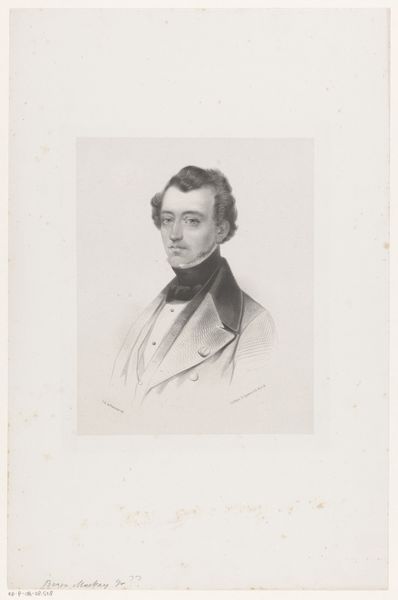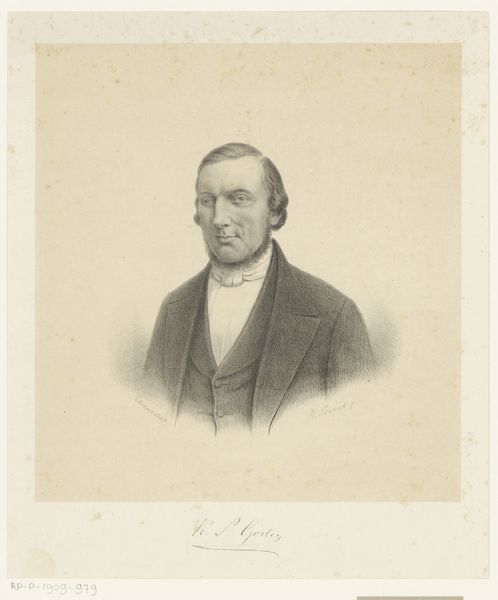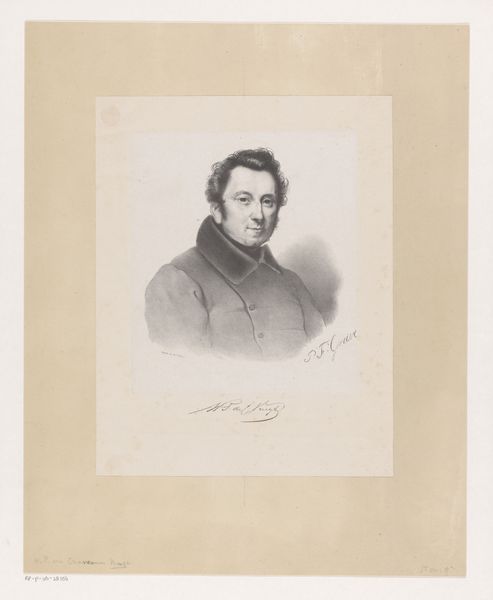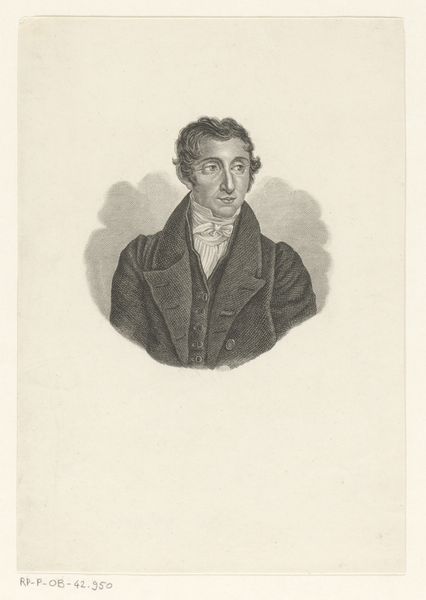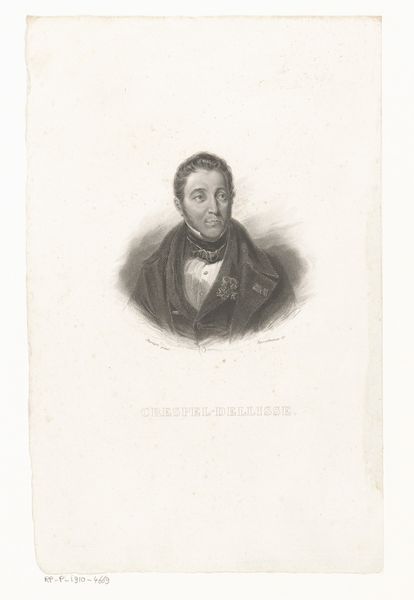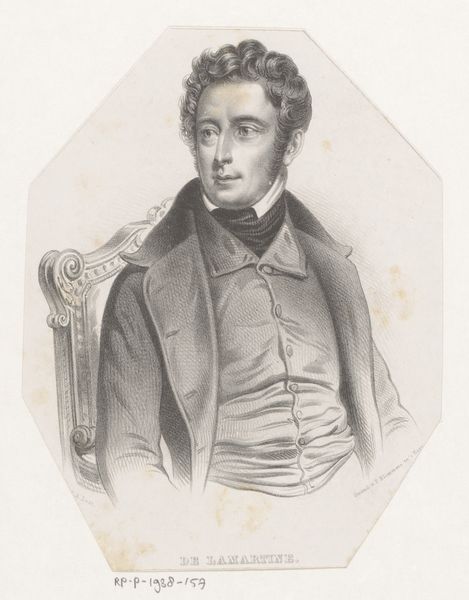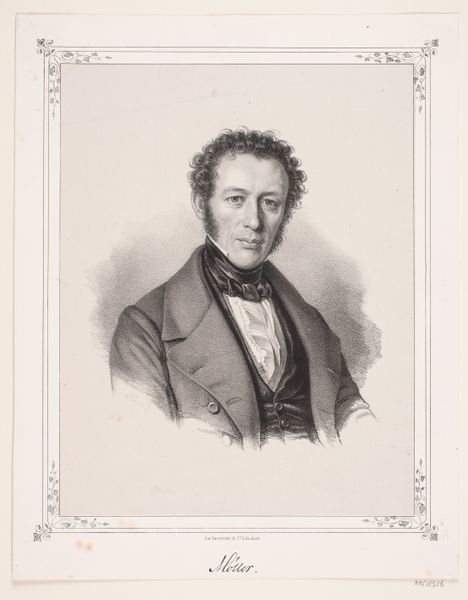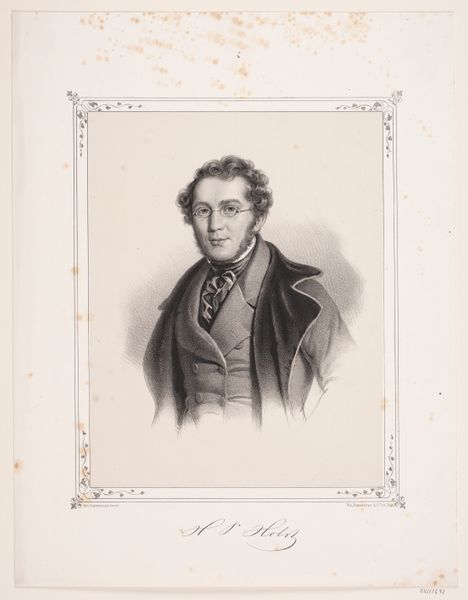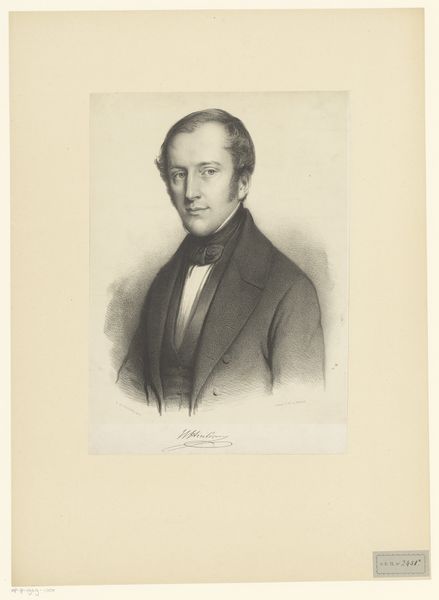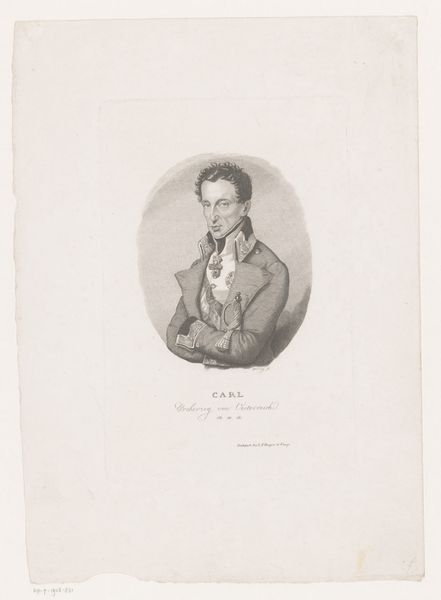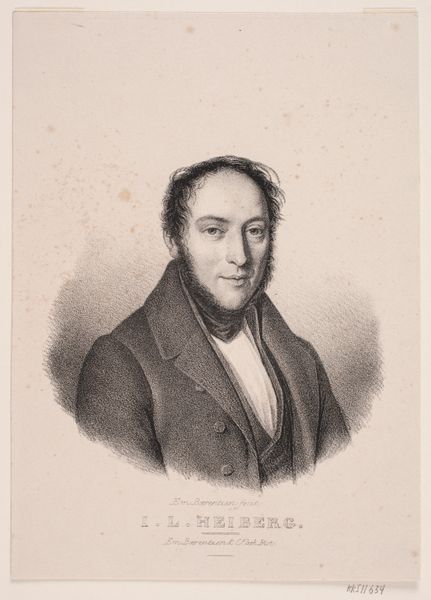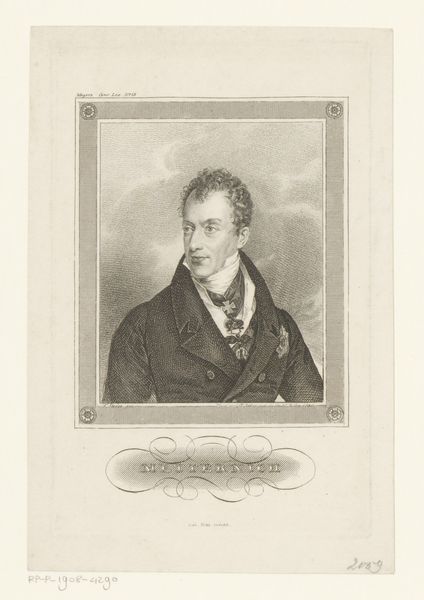
Dimensions: 397 mm (height) x 304 mm (width) (bladmaal)
Peter Gemzøe made this portrait of E. Hornemann in Denmark, sometime in the 19th century. It's a lithograph, a newly democratized medium capable of producing multiple copies of an image. Lithography helped fuel a boom in portraiture, particularly amongst the emerging middle class. This image speaks to the period's evolving social dynamics. Prior to the 19th century, portraits of commoners were rare, typically reserved for royalty or the aristocracy. But here, Hornemann, a man of some status, had his portrait made and preserved, perhaps to signal his own importance within Danish society. The image creates meaning through its adoption of visual codes associated with wealth and status. We see it in Hornemann’s dress and the meticulous rendering of his features. To fully understand the portrait's significance, we would need to dig into the social and economic history of Denmark. For example, the records of the lithography studio would tell us how common such commissions were at the time. By situating art within its social and institutional contexts, we can reveal its broader cultural significance.
Comments
No comments
Be the first to comment and join the conversation on the ultimate creative platform.
